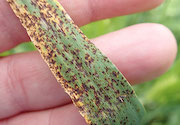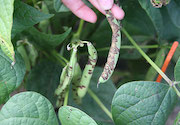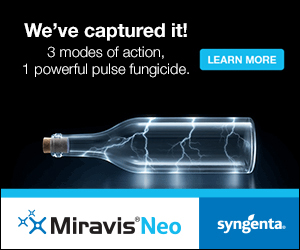| |
| |
 |
 |
| |
 |
|
@{mv_date_MMM d, yyyy}@ |
|
| |
 The Saskatchewan Ministry of Agriculture is asking farmers to give permission to their Regional office or online for staff to come onto their land to do a survey as part of the annual pest forecast map.
» Read more...
The Saskatchewan Ministry of Agriculture is asking farmers to give permission to their Regional office or online for staff to come onto their land to do a survey as part of the annual pest forecast map.
» Read more...
Strydhorst, with Alberta Agriculture and Forestry, and Mangin, a PhD student at the University of Manitoba, discuss plant growth regulators and the complex factors to consider in deciding when (and if) to use them.
» Read more...
The Manitoba Wheat and Barley Growers Association has created a list of considerations to assist farmers in deciding how (and whether) to manage last year’s unharvested crops.
» Read more...
|
| |
 |
 |
| |
|
| |

Over a decade ago, a team of agronomists, chemists and technology specialists started working on finding an anhydrous ammonia stabilizer solution. What they created is CENTURO®: a nitrification inhibitor growers can use with anhydrous ammonia to help protect against nitrogen loss from leaching and denitrification. Now available in Canada, this groundbreaking solution slows the conversion of ammonium to nitrate. It also has a subzero freeze point, extending your window of protection against environmental impacts like temperature while also boosting your yield potential. Learn how you can maximize the nutrients available for crop uptake and get 3X better protection with CENTURO.
>> Learn More |
| |
|
| |
 Kelly Turkington, a plant pathologist with Agriculture and Agri-Food Canada in Lacombe, Alta., is leading a Prairie-wide, multi-agency project to provide up-to-date information on barley pathogens. Staying on top of barley disease issues is critical at all levels, but the project also reveals the importance of monitoring for disease at the farm level so growers can take proactive action quickly.
» Learn more
Kelly Turkington, a plant pathologist with Agriculture and Agri-Food Canada in Lacombe, Alta., is leading a Prairie-wide, multi-agency project to provide up-to-date information on barley pathogens. Staying on top of barley disease issues is critical at all levels, but the project also reveals the importance of monitoring for disease at the farm level so growers can take proactive action quickly.
» Learn more |
| |
 While dry bean anthracnose hasn’t been an issue in the past several years, the disease appears to operate in 10-year cycles, meaning it’s due to come back. The disease can cause significant crop damage and yield loss, but researchers in Manitoba and Ontario have conducted three two-year studies since 2008 to better understand the fungus that causes dry bean anthracnose and how to manage it.
» Learn more
While dry bean anthracnose hasn’t been an issue in the past several years, the disease appears to operate in 10-year cycles, meaning it’s due to come back. The disease can cause significant crop damage and yield loss, but researchers in Manitoba and Ontario have conducted three two-year studies since 2008 to better understand the fungus that causes dry bean anthracnose and how to manage it.
» Learn more |
| |
|
| |

Miravis ® Neo fungicide is proof that you can catch lightning in a bottle: it’s the only pea and chickpea fungicide with three modes of action for consistent performance and built-in resistance management. The all-in-one pre-mix can be applied early, so the crop is protected from diseases like Ascochyta and Mycosphaerella blight throughout the infection period, giving you peace of mind come harvest time. Discover how Miravis ® Neo delivers long-lasting, consistent protection here.
Always read and follow label directions. Miravis® Neo refers to Miravis® Neo 300SE. Miravis® is a trademark of a Syngenta Group Company. © 2020 Syngenta.
|
| |
|
| |
 Learn how to minimize above- and below-ground nitrogen loss to maximize return on investment for your growers — even with challenging weather conditions.
» Learn more
Learn how to minimize above- and below-ground nitrogen loss to maximize return on investment for your growers — even with challenging weather conditions.
» Learn more |
| |
| TRENDING IN EASTERN CANADA |
|
|
| |

Can growers use leftover soybean seed that was left unplanted after 2019? An OMAFRA report looks at the factors to consider when deciding whether it’s worth the risk.
» Learn more
Just in time for spring seeding, OMAFRA has released a report on whether reducing tire pressure will reduce soil compaction when taking heavy machinery into the field.
» Learn more
|
| |
| |











